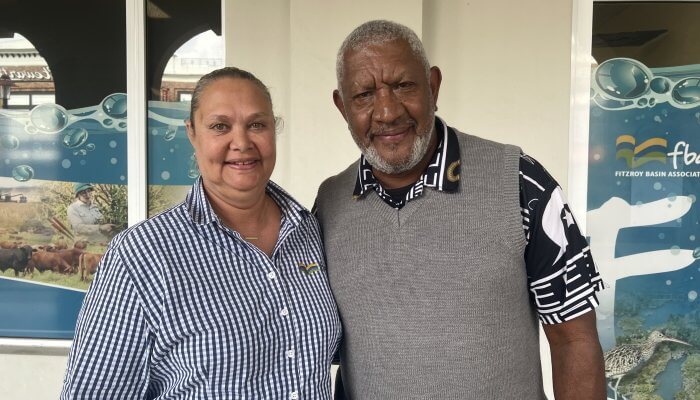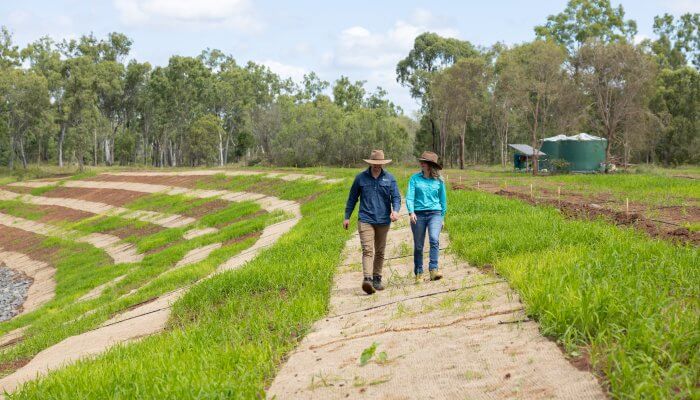Resources library - Land Managers
Land Managers Resources
Flooding disaster leads to property re-design and resilience
Flooding disaster leads to property re-design and resilience

In the aftermath of ex-tropical cyclone Oswald, it would have been easy for husband and wife team Dave and Leonie Paish to be overwhelmed by the rebuilding work needed to restore their dairy operations at Velvet Waters.
07/07/2015
Gully Stabilisation & Soil Conservation Case Study
Gully Stabilisation & Soil Conservation Case Study
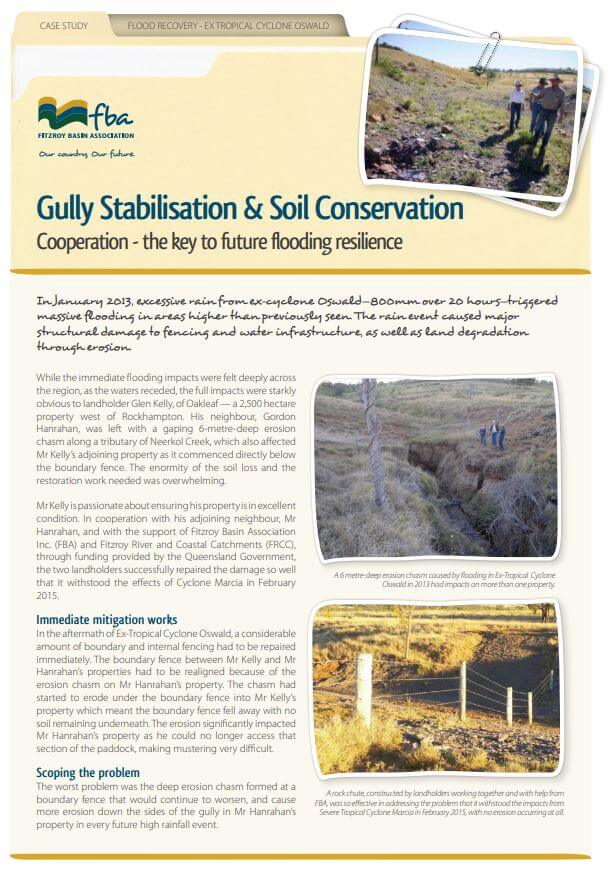
In January 2013, excessive rain from ex-cyclone Oswald—800mm over 20 hours—triggered massive flooding in areas higher than previously seen. The rain event caused major structural damage to fencing and water infrastructure, as well as land degradation through erosion.
28/05/2015
Cyclone Marcia damage to grazing and farming land
Cyclone Marcia damage to grazing and farming land

In February 2015, Category 5 - Cyclone Marcia crossed the coast north of Yeppoon. In it's wake a trail of destruction was left in the Fitzroy Basin, particularly to those in the farming and grazing community.
03/03/2015
Better beef businesses with Grazing BMP
Better beef businesses with Grazing BMP

Robert Sherry and his wife Jane run Wahroonga, a 10,000 hectare cattle property in the Clarke Creek district approximately 200 kilometres north-west of Rockhampton. Wahroonga was the 100th grazing enterprise to complete the Grazing Best Management Practices (Grazing BMP) program. The voluntary, self-paced and self-assessed program helped him focus on the areas where he can improve his business and helps the industry benchmark its success. Robert believes Grazing BMP is a positive thing for the beef industry, and is encouraging all beef producers to complete the program, as it has made a big difference to his operations. Grazing BMP is a joint initiative of Fitzroy Basin Association Inc. (FBA), AgForce, the Queensland Department of Agriculture, Fisheries and Forestry (DAFF) and North Queensland Dry Tropics and is delivered with significant investment from the Australian and Queensland Governments.
20/05/2014
Managing erosion and improving water quality by fencing waterways
Managing erosion and improving water quality by fencing waterways
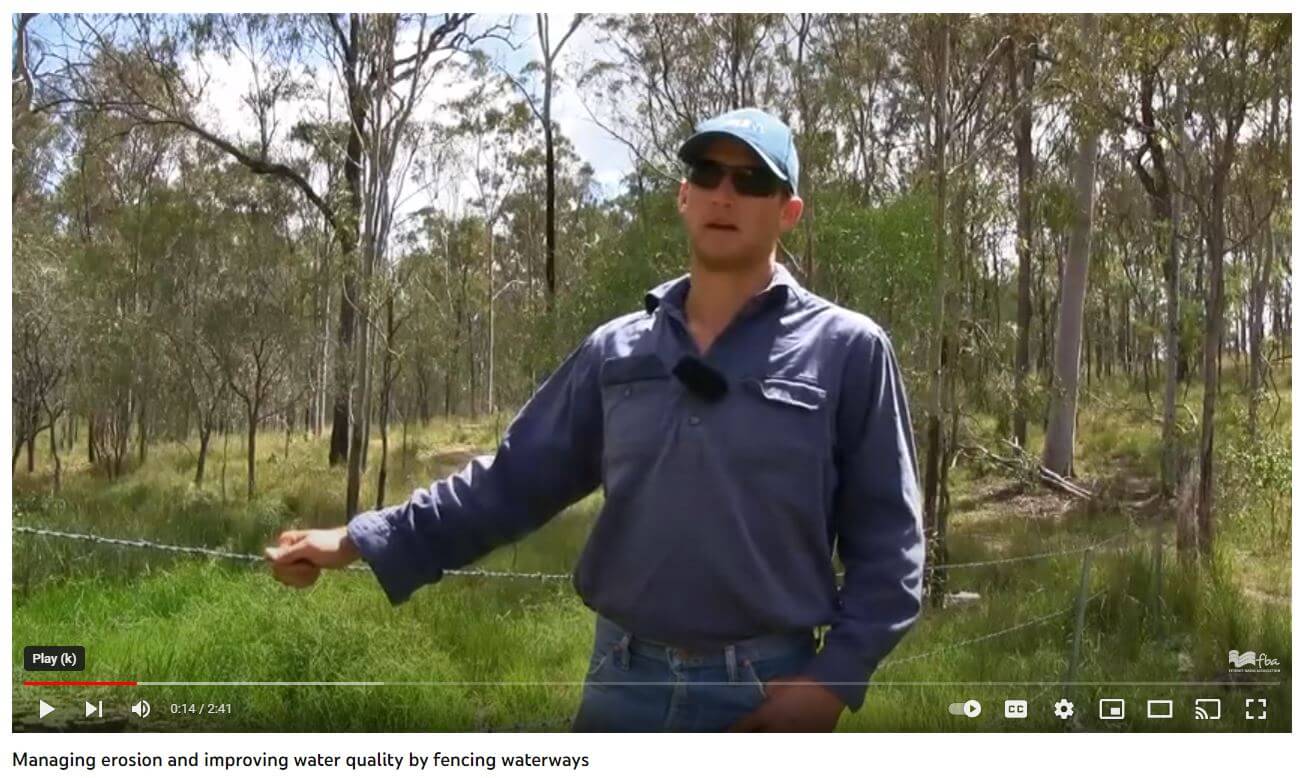
The Turichs 3,000 acre property has been in their family for 150 years. Fourth and fifth generation graziers Peter and Matt Turich run 350 head of cattle, predominantly breeders. They've installed riparian fencing with support from FBA to keep cattle out of waterways and reduce erosion issues on their property. They've found that by having the ability to control cattle access, they can manage sediment run off and water quality on their property. With the additional fencing, they're now looking to move to a rotational grazing system to improve their pastures and soils, their product as well as managing sediment and protecting water quality. By doing this ground cover will improve and precious nutrients found in the top soil won't be washed downstream when it rains. Next they're looking to pump to a trough at a high point. This will allow them to ensure all of their cattle have access to clean and good quality water. The Turichs have seen the value of keeping cattle out of waterways through this project with FBA funded through the Reef Rescue component of the Australian Government's Caring for Our Country initiative. They recognise that what they do on their property not only benefits their business but is important to help maintain the health of the Boyne River system.
28/08/2013
Natural sequence farming case study
Organic farmers spread word on natural sequence farming
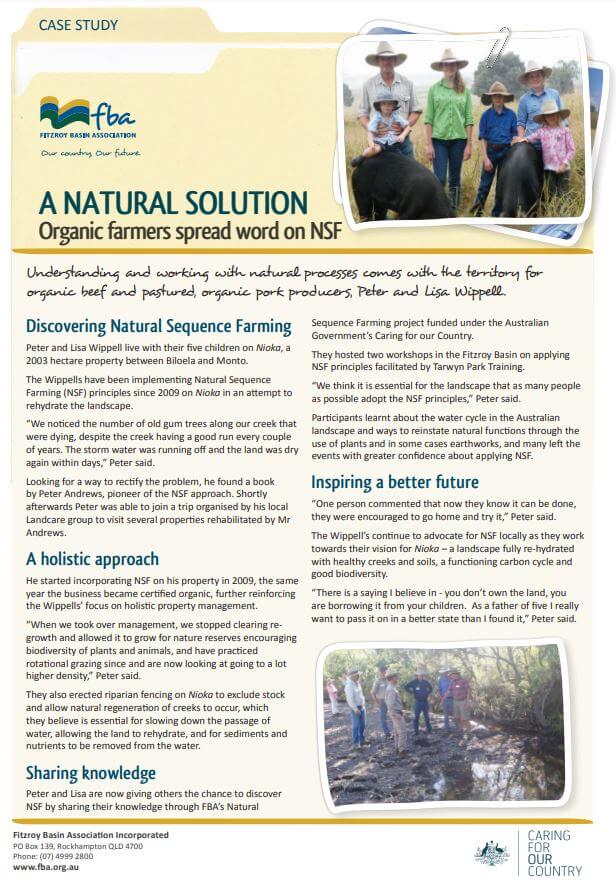
The Wippells have been implementing Natural Sequence Farming (NSF) principles since 2009 on Nioka in an attempt to rehydrate the landscape.
12/08/2013
Move to rotational grazing is a sustainable choice on Dumbarton Station
Move to rotational grazing - Dumbarton Station

Winemaker turned grazier Brian McGuigan decided the most profitable and sustainable management approach on his Dumbarton Station property near Middlemount in central Queensland was a move to rotational grazing. He divided his large paddocks into smaller sections and combined with changes in herd management, such as resting paddocks to allow seed to set, he has improved carrying capacity and land condition. Brian received some assistance to make changes via a Reef Rescue water quality improvement grant provided by Fitzroy Basin Association, funded under the Australian Government's Caring for our Country program.
04/08/2013
Flood recovery focusing on weed control
Flood recovery focusing on weed control
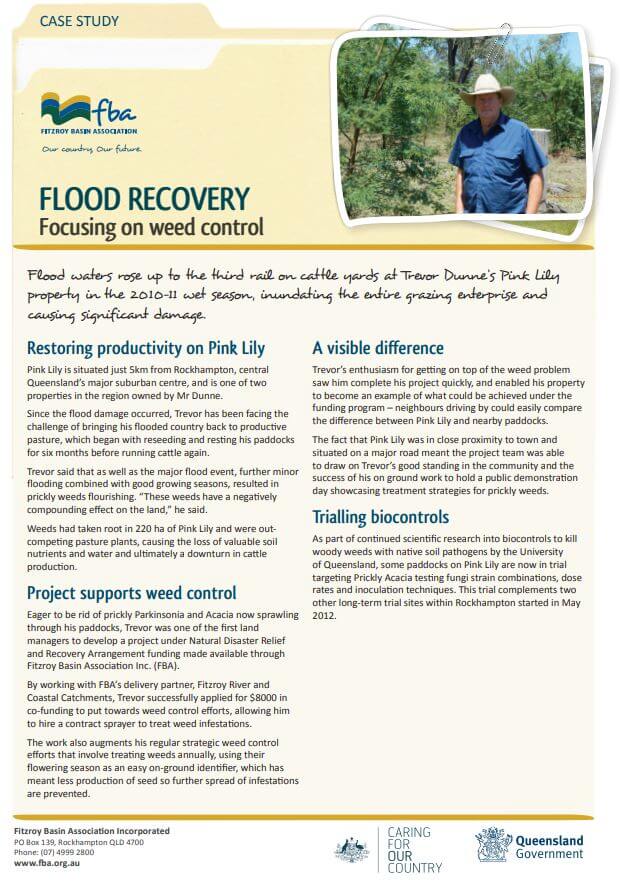
Since the flood damage occurred, Trevor has been facing the challenge of bringing his flooded country back to productive pasture, which began with reseeding and resting his paddocks for six months before running cattle again.
31/07/2013
Flood recovery Starting from scratch in the Dawson
Flood recovery Starting from scratch in the Dawson

The downside of flat farming landscapes is that when a major flood occurs, inundation is uniform and very soon every inch of the farm is submerged, completely destroying crops and washing away precious soil. This is what happened on two properties owned by Debbie and Mike Austin. Harcourt, which is 1575ha in size and the 730 ha Riverland, are neighbouring properties on the banks of the Dawson River in the Fitzroy Basin.
31/07/2013





